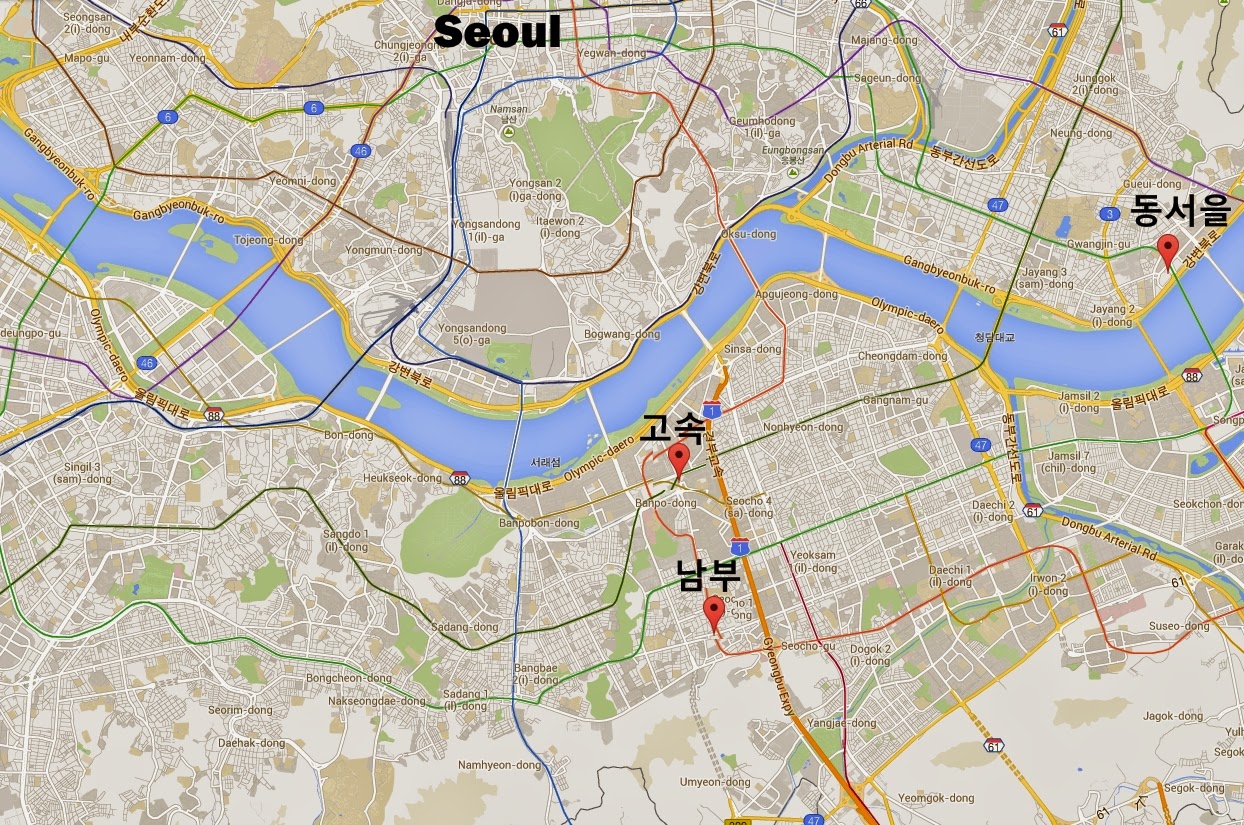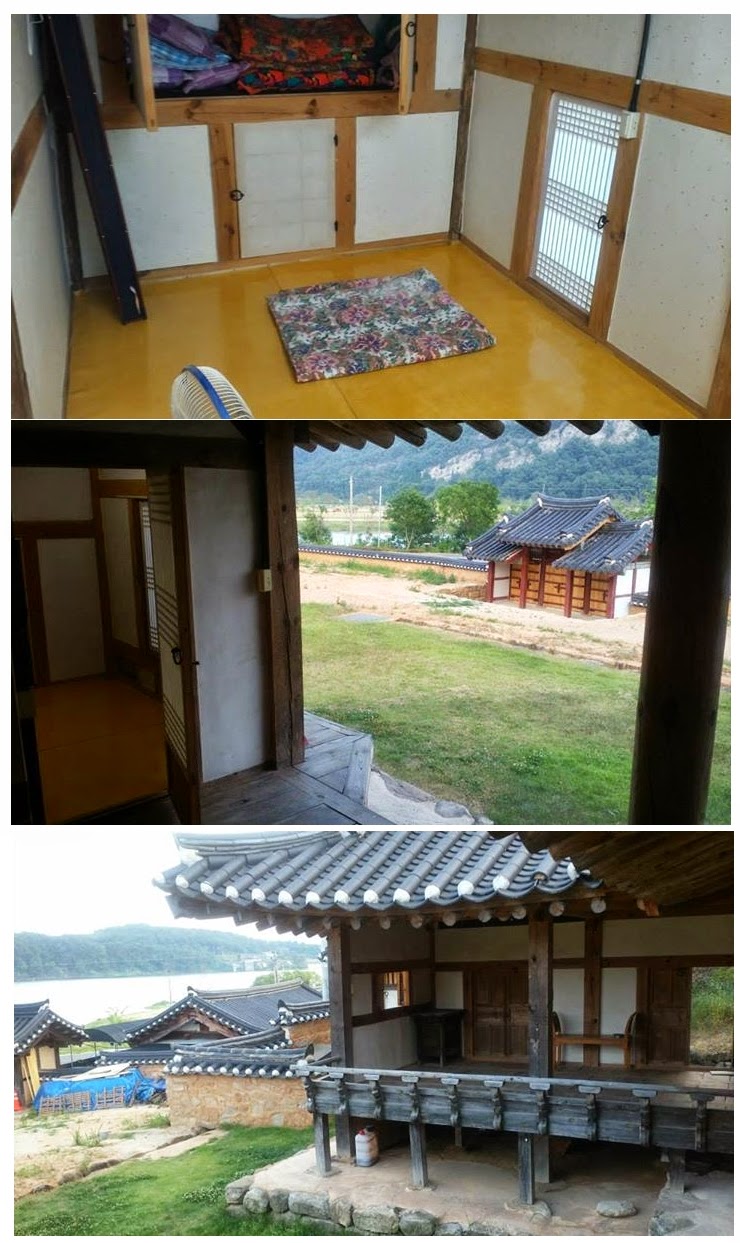City-to-City Buses
(시외버스)
Inter-city bus riding is easiest option, hands down. You can quickly stow your bus underneath, ticket times are plentiful, buying tickets isn't a hassle, and prices are reasonable.
Check out each city's bus schedule on their official website. Another possibility is a quick Google or Naver search for the
city's name +
시외버스 +
시간표 as in 대구 시외버스 시간표 to see what Daegu's bus schedule looks like. Photos usually link to someone's personal Naver blog so the photos aren't always the most reliable but I have on more than one occasion used this method to find out when the last bus to Seoul is.
 |
| (above: easy stowage underneath inter-city buses. Photo credit: Join Chase) |
Buses in Seoul can depart and arrive from
three different stations:
Express Bus Terminal
(서울고속버스터미널)
*also known as "Central City" (센트럴시티) and
*also known as "Gangnam Bus Terminal" (서울강남버스터미널)
My personal favorite as it's not terribly far away from where I live (only about 8km) and has more time slots available to just about anywhere outside of Seoul. Links to subway lines 3, 7, and 9.
Dong Seoul Bus Terminal
(동서울종합터미널)
*also known as "Gangbyeon Station" (강변역)
My backup option to use if a better time is available. Links to line 2.
Nambu Bus Terminal
(서울남부터미널)
An older bus terminal that also has inter-city buses. Only used it once when coming back to Seoul. Links to line 3.
(above: Seoul's major inter-city bus terminals)
Regular Subway
(지하철)
Only heading out to Bundang or Incheon and want to take a subway back home? Traveling with a bike via regular subway is possible but expect to be turned away during weekdays and busy weekday commuting times (7am-9am, 5:30pm-8:30pm). Some lines
technically do not allow bikes at all, but most will allow you and your frame on the first and last car only. I've used Line 9 a number of times with the bike even though it isn't technically supported. Go figure. Take a look:
(above: which lines officially support bike use. Original Korean above and my rough translation below)
(above: which lines officially support bike use and how it has changed lately)
For more information, this
OhMyNews article (Korean) is really helpful at summarizing the issue. Lots of good info there.
Expect three types of situations:
(above: a best case scenario)
(above: an average weekend subway ride back home in the first/last car)
(above: bicycle subway clusterfudge)
Seoul < --- > Chuncheon
If iTX slots aren't available or you just want a sure bet coming from Chuncheon back to Seoul, subway is not a bad option. It's cheap, but it might be crowded.
(above: expect about an hour and a half to/from Seoul (Sangbong station) to Chuncheon via subway)
Seoul < --- > Incheon
*to be posted*
Heavy Rail / Slow Train / Bullet Train
(기차, 무궁화호, iTX, KTX)
This is also an option, but I have had hit and miss experiences with the slow trains. Keep in mind that bike riders and their bikes are not ideal passengers and trains were not designed for us in mind. We take up space and we are an inconvenience. iTX is the only exception to this as it was designed to accommodate bike riders by design, but those seats are limited.
(above: iTX bike spots (자전거 좌석) need to be purchased ahead of time)
The less express it is, the more space you'll have and the less hassle you'll get. Bullet train KTX is probably not going to let you on. I have yet to see the fabled green train that is supposedly bike friendly). Then again, there are people who have taken their bikes, fully assembled on and off without hassle. Go figure. It seems it depends on the amount of passengers booked and the mood of the people checking tickets at the gate.
I seem to have mostly experienced the opposite side of the luck coin. I've been denied multiple times on proper trains. Once, in Chuncheon, I was turned away even after purchasing a bike ticket and waiting in queue (they refunded me the ticket price and I took the Gyeongchun subway line back to Seoul instead). Think 2 hours coming home instead of 30 minutes.
This kind of maybe-allowed-maybe-not policy is why I prefer buses instead.
(above: KTX mid-car luggage rack being utilized by bikes instead)
.png)


















































.jpg)













